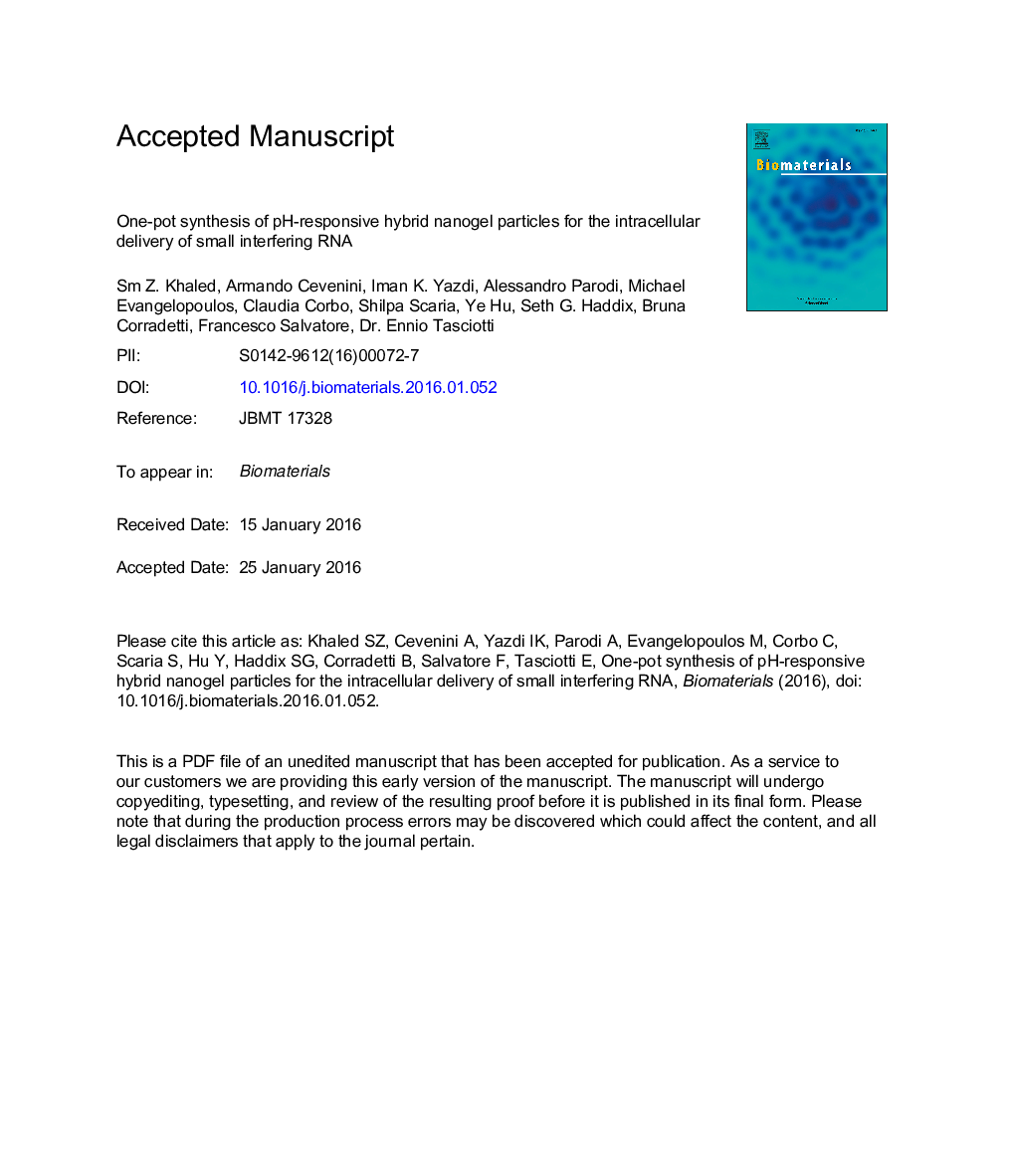| Article ID | Journal | Published Year | Pages | File Type |
|---|---|---|---|---|
| 6485048 | Biomaterials | 2016 | 36 Pages |
Abstract
This report describes a novel, one-pot synthesis of hybrid nanoparticles formed by a nanostructured inorganic silica core and an organic pH-responsive hydrogel shell. This easy-to-perform, oil-in-water emulsion process synthesizes fluorescently-doped silica nanoparticles wrapped within a tunable coating of cationic poly(2-diethylaminoethyl methacrylate) hydrogel in one step. Transmission electron microscopy and dynamic light scattering analysis demonstrated that the hydrogel-coated nanoparticles are uniformly dispersed in the aqueous phase. The formation of covalent chemical bonds between the silica and the polymer increases the stability of the organic phase around the inorganic core as demonstrated by thermogravimetric analysis. The cationic nature of the hydrogel is responsible for the pH buffering properties of the nanostructured system and was evaluated by titration experiments. Zeta-potential analysis demonstrated that the charge of the system was reversed when transitioned from acidic to basic pH and vice versa. Consequently, small interfering RNA (siRNA) can be loaded and released in an acidic pH environment thereby enabling the hybrid particles and their payload to avoid endosomal sequestration and enzymatic degradation. These nanoparticles, loaded with specific siRNA molecules directed towards the transcript of the membrane receptor CXCR4, significantly decreased the expression of this protein in a human breast cancer cell line (i.e., MDA-MB-231). Moreover, intravenous administration of siRNA-loaded nanoparticles demonstrated a preferential accumulation at the tumor site that resulted in a reduction of CXCR4 expression.
Related Topics
Physical Sciences and Engineering
Chemical Engineering
Bioengineering
Authors
Sm Z. Khaled, Armando Cevenini, Iman K. Yazdi, Alessandro Parodi, Michael Evangelopoulos, Claudia Corbo, Shilpa Scaria, Ye Hu, Seth G. Haddix, Bruna Corradetti, Francesco Salvatore, Ennio Tasciotti,
